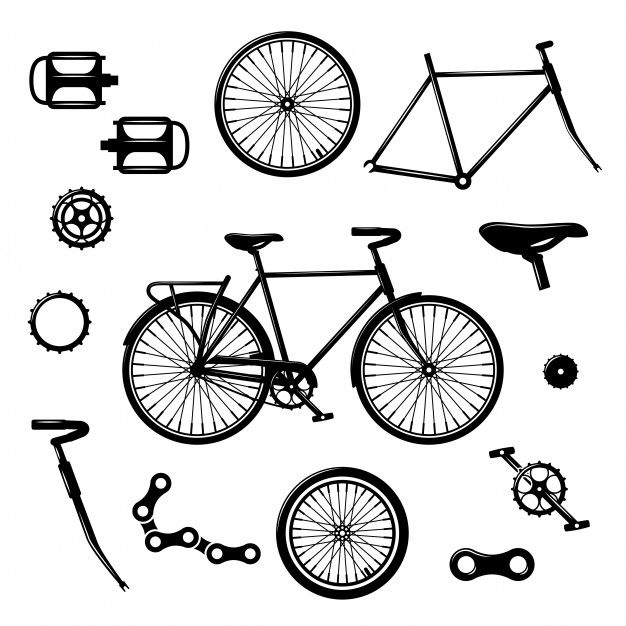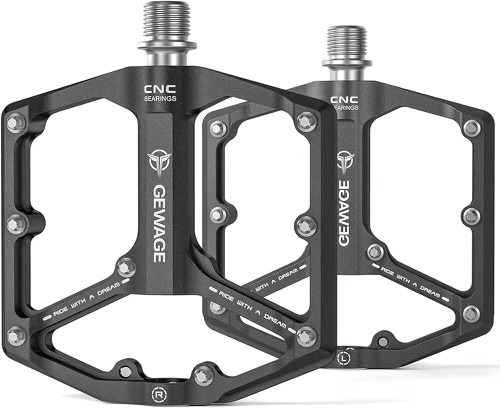
Cuzco, John
Writing for Engineering
Professor Davidow
Technical Description of a bicycle
Table of Contents
Introduction: Page 1
Description of Bike: Page 2-5
Conclusion: Page 6
References: Page 7
Introduction:
Bicycles are a simple yet very useful invention used all around the world by many, it can be used for transportation needs, food deliveries, and even used in sports. A simple invention that almost everyone can use has dated back for decades and surprisingly it still is used by millions.
It roots back in the early 1800s where a German baron by the name of Karl Von Drias made the first development where he created a two wheeled steerable contraption, and by this invention he was then named as the father of the bicycle. The contraption consisted of having the rider push himself along with both his feet and with no brakes or pedal, it was not only difficult to ride but it was very dangerous. After the invention by Drias it later fell out of fashion, but the invention did not die there as his early intervention continued to be improvised across Europe.
Beginning in the mid 1800s, several French inventors which included Pierre Michaux, Pierre Lallement and Ernest Michaux created new prototypes of the bike which included pedals attached to the front of the wheel. Although it was not a major difference from the first invention it was a huge step in the development of the bike. These new machines were soon to be called “bicycles”. After many inventors put their mind in the new bicycle invention such as Eugene Meyer and James Starley, they introduced a new model which consisted of having an oversized front wheel, with this new invention it started the first ever bicycle club and races.
Throughout the 1800s the bicycle has been improving little by little and eventually an Englishman by the name of John Kemp Starley perfected the bike, which was the safest bike out of the ones invented before, which equalized the size of the wheels and introduced a chain drive that was implemented. As time went by, new developments in tires and brakes followed shortly which was then considered the basic bike.
Bikes have been a huge part of past decades since it cost very little to make, it was produced in massive quantities and it was very affordable for the users. Although it doesn’t seem like a good investment, it changed the way people travelled. Even till this day many use a bike as a form of transportation including myself. There are handfuls of races and competitions around the world that include a bicycle. A bike is very different from any other form of transportation as it does not need any gasoline, therefore it doesn’t produce any carbon emission unlike cars. The less cars that we use the better it is for the environment because at the end of the day that’s the most important thing that matters.
Although it took a while for the full development of the bike itself, it was one of the best inventions out there as it is still used by millions everyday, and many are still improving the bike to make it even better than it already is.
The Mechanics of a BIke
The basic bike as everyone knows consists of pedals, a seat, handles, brakes, tires, frame, chain, and a brake lever. Although there are more complex types of bikes such as an electric bike and a dirt bike, they all function very similarly to each other. In this section of the technical description I will focus on every part of the basic bike which are the principal parts needed for a bike. Although every bike can vary in different features depending on the company who manufactured it, they all work the same at the end of the day.
- Frame
The Frame is the main part of the bike as it holds all the other parts together, which is usually made out of aluminium, although it doesn’t not have a major use for the bike’s function it is still one of the most important parts of a bike. Nowadays there are different types of frames, some are light in weight which is usually used in racing or in mountain bikes and some frames are heavy weight which are used for street bikes in which the weight does not necessarily matter. (See figure below)

- Pedals
Also an important part of the bike, which helps propel your bike forward. They provide a wide and stable surface to support your feet on both sides of the bike. The pedal is what keeps you moving and without it you’re not going anywhere. They are specifically made to have a sufficient grip and control for your feet. (See figure below)

- Wheels
Which can be both thin and/or thick depending on the user. Which provides the connection between the bicycle and the road. Made of mostly rubber the wheel is what brings the bike stability and it keeps it running. Although there are various types of wheels used today, they all do the same job which is to drive the bike forward. (See figure below)

- Chain
Which transfers power from the pedal to the drive of a bicycle, which then propels it. Made of various links connected to each other they are held together by small rivets which keep the links in place making up the chain as a whole. Without the chain itself you will not go very far with your bike. (See figure below)

- Brakes
A very simple function for the bike in which it reduces the speed and it slowly stops the wheel from moving forward which then eventually will leave you fully stationed if used correctly. Although there are different types of brakes such as hydraulic brakes and wired brakes they all do the same function which is to reduce the speed of the bike. (See figure below)

- Handle Bar
provides the rider with a secure grip in order to change the directions of the bike in which it is heading, although it seems like a small piece of metal bar it is very crucial to have a handle bar and it is something you need in order to use a bike. If not used correctly it can lead to serious injury.
(See figure below)

- Brake Lever
A very simple yet effective part of the bike, when depressed slowly it activates the brakes and it is what controls the speed of the brake on the bike, if pressed to hard it can send you flying off your bike, that’s why when depressing the brake lever you have to slowly depress it to not cause any injuries. (See figure below)

- Seat
A stable and comfortable place for the rider to sit on. It can come in many forms such as a gel form for more comfort for the rider. A simple device that is needed for a bike.
(See figure below)

Conclusion:
Although a bike does not seem very complicated, it consists of various of parts that essentially make up the bike itself, even though there are various of companies competing to make a better bicycle they all have the same goal which is to transport the user from one place to another and the best part is that it does not require any fuel or it doesn’t harm the environment like other transportation systems such as cars and buses. From the early 1800s till now there has been a massive improvement of the bike and there are still various other features that make up a bike. The future of the bike will never fail, it will only improve from now on and it will still be used by millions around the globe.
References :
Andrews, Evan. “The Bicycle’s Bumpy History.” History.Com, A&E Television Networks, 3 June 2017, www.history.com/news/bicycle-history-invention.
Olson, Anthony. “Everything You Need to Know about Bike Pedals.” Pure Cycles, Pure Cycles, 7 Aug. 2018, www.purecycles.com/blogs/bicycle-news/everything-you-need-to-know-about-bike-pedals.
“Bicycle Wheels 101.” L9 Sports, www.levelninesports.com/learn-center/bike-gear-education/bicycle-wheels-101. Accessed 10 Mar. 2024.
“Bicycle Chains Explained: Everything You Need to Know.” Bike Chains Explained: Structure, Speeds, Compatibility, Chain Length and More, www.bikeradar.com/advice/buyers-guides/bicycle-chains. Accessed 10 Mar. 2024.
Arek. “Bike Brakes Explained.” Cycle Maintenance Academy, 14 June 2023, www.cyclemaintenanceacademy.com/brakes/bike-brakes-explained/#google_vignette.
“Different Types of Handlebars Explained!” Bikes Palm Beach, 11 Nov. 2021, bikespalmbeach.com/different-types-of-handlebars-explained/.


